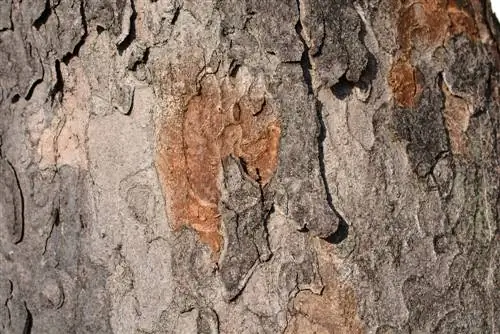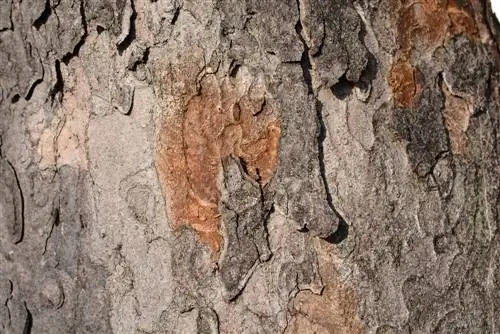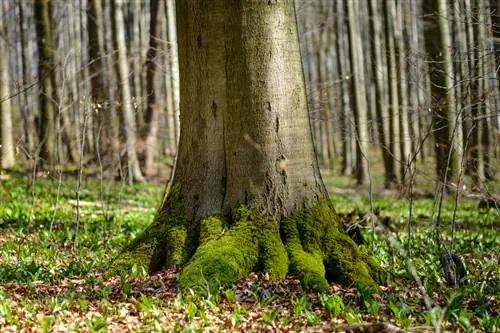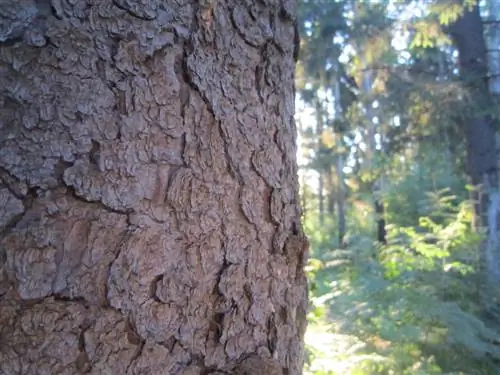- Author admin [email protected].
- Public 2023-12-16 16:46.
- Last modified 2025-01-23 11:22.
You can use a tree trunk all year round for accurate tree identification. Read useful tips here on how to recognize a tree by looking at the bark.

How do I recognize a tree trunk by its bark?
A tree trunk can be identified by its bark. The types of bark that can be distinguished are: striped bark (longitudinal stripes), scaly bark (scale-shaped cork plates), reticulated bark (net-shaped torn bark) and smooth bark (initially smooth, later cracked). The tree species has a significant influence on the appearance of the bark.
Can I recognize a tree trunk by its bark?
The appearance of the bark is animportant identifying featurefor tree identification. Unlike leaves or flowers, a tree bears its bark throughout all seasons. As important components in the structure of a tree trunk, bark and bast together form the bark. Most tree trunks have bark as the outer layer of bark. Some tree species do not have a rough bark and have a predominantly smooth bark. TheseBark types can be distinguished:
- Striped bark (longitudinal stripes)
- Scaly bark (scale-shaped cork panels)
- Net bark (net-shaped torn bark)
- Smooth bark (initially smooth, later cracked)
Which tree species can be recognized by a barky tree trunk?
You can recognize most tree species by their jaggedscale bark, such as sycamore maple (Acer pseudoplatanus), oak (Quercus), chestnut (Castanea) and black pine (Pinus nigra). The longitudinally cracked striped bark on the tree trunk is characteristic of the widespread tree of life (Thuja). A poplar tree (Populus alba) also reveals its identity through its barky bark with deep longitudinal furrows. The distinguishing feature of sessile oak (Quercus petrea) and common ash (Fraxinus excelsior) is a tree trunk covered by thick, reticulated bark.
Which tree trunk can be recognized by its smooth bark?
Well-known tree species with a smooth bark are beech (Fagus), especially the popularCommon Beech(Fagus Sylvatica) and the popularHornbeam (Carpinus betulus) from the birch family. A bird cherry (Prunus avium) thrives when young with smooth, leathery bark that later peels off the tree trunk in a ring shape. You can accurately identify the ubiquitous silver birch trees (Betula pendula) by their white-black, smooth, curly bark.
The frost-sensitive cork oak (Quercus suber) from the Mediterranean replaces the scaley bark of a German oak with a thick, smooth layer of cork on the tree trunk.
Tip
Cambium heals injured tree bark
Immediately under the bark there is a tree's own first aid station for all kinds of injuries. Cambium is a thin, extremely active layer of cells in the trunk wood. From spring to autumn, cambium diligently produces bast on the outside and young wood on the inside. If the tree suffers a wound, Cambium immediately takes care of the wound healing. For this purpose, cuts and other injuries are quickly covered with young bark.






